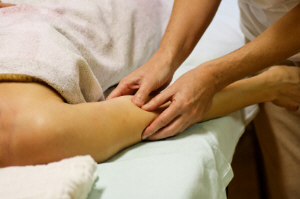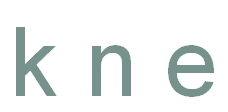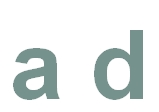services
knead massage.org
Deep Tissue Massage
Release chronic patterns of tension in the body through slow, firm strokes and deep finger pressure on the contracted areas. This technique follows the grain or the cross grain of the muscle and is used on muscles, tendons, and fascia. This treatment enhances blood supply to the problem areasm which helps to diminish pain.
 | ||||
Neuromuscular Therapy
Treats acute or chronic pain caused by a strain, sprain, injury, stress, or tension. It can eliminate or minimize discomfort and increase flexibility and circulation while it improves posture, energy, and vitality by addressing specific involved muscles, tendons, soft tissue, and ligaments. Moist heat pads or ice treatments are also used when providing specific treatments.
Sports Massage
Commonly used by athletes in preparation for workouts and sporting events. It loosens, warms, and prepares muscles for intensive use. By incorporating assisted stretching, endurance and performance are improved and the chance of injury is reduced. Post-event massage relieves pain, prevents stiffness, and returns muscles to normal posture. This technique is also used for rehabilitation from injury.
Swedish Massage
Promotes general relaxation, improves circulation and joint mobility, and relieves muscle tension. Used primarily in a full body session, it is a system of long strokes, kneading, and friction techniques on the superficial layers of muscles.
Injury Assessment and Treatment
Quiz our therapist.
Pregnancy Massage
Used for the promotion of relaxation and decreased insomnia, reduction of edema and blood pressure, relief of varicose veins, increasing blood and lymph circulation, stress relief on weight-bearing joints, improving posture, and decreasing sciatic pain.
Craniosacral Massage
Biodynamic Craniosacral Therapy involves development by the practitioner of finely-tuned skills of palpation and perception to sense the more subtle rhythms of the body and the interaction of these rhythms with patterns of distress or congestion. Craniosacral massage allows the body to self-heal and self-regulate. It is done in a non-invasive way with light, hands-on contact. The practitioner's deep and clear quality of presence can also become a reflective mirror for the patient and an invaluable catalyst for the potential for change in the central nervous system and body.
Myofascial
A holistic approach to fascial release that promotes flexibility, improves circulation, and improves health and wellness.
PNF & AIS
Proprioceptive Neuromuscular Facilitation (PNF) refers to any of several post-isometric relaxation stretching techniques in which a muscle group is passively stretched, then contracts isometrically against resistance while in the stretched position, and then is passively stretched again through the resulting increased range of motion. PNF stretching is currently the fastest and most effective way known to increase static-passive flexibility.
Active Isolated-Stretching (AIS) involves working one muscle at a time. By actively contracting muscles opposite of the targeted muscle, AIS automatically relaxes specific muscle in preparation for its stretch. AIS is performed by gentle and quick stretches, and releases the muscle before it has a chance to protectively contract. Developed by Aaron L. Mattes, AIS is used to improve the body's potential to not only heal itself but also to enhance performance.
Specialty Massages Also Available
(Prices may vary from our normal rates as indicated.)
502.291.3582


